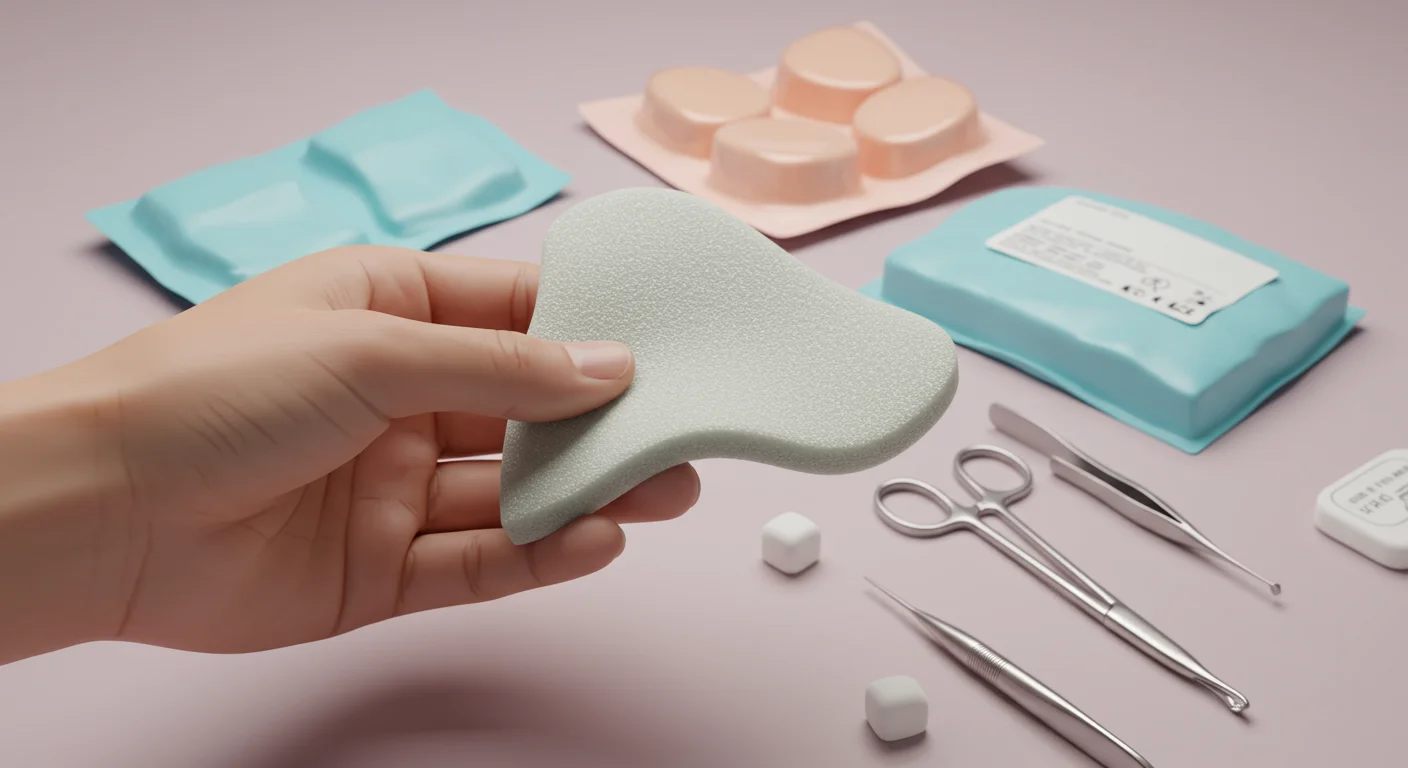¿Qué es la espuma EVA??
Definición de espuma EVA
espuma EVA, Corto para la espuma de acetato de etileno-vinilo, es un material versátil y ampliamente utilizado en varias industrias. Es un tipo de espuma de célula cerrada conocida por su durabilidad., flexibilidad, y excelentes propiedades de absorción de choques.
Proceso de composición y fabricación de espuma de EVA
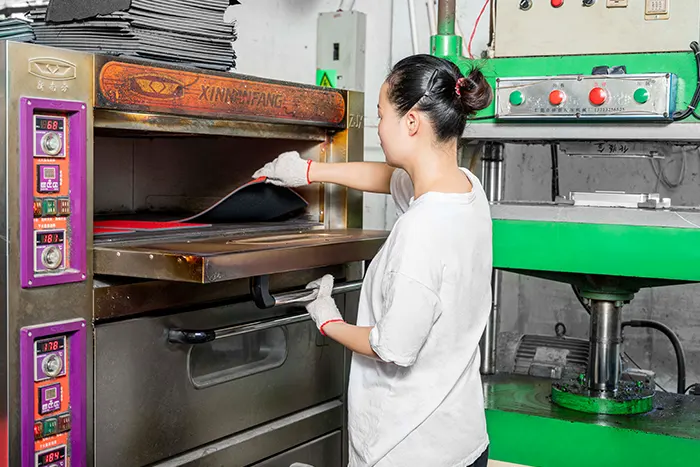
La espuma EVA está compuesta de copolímeros de etileno y acetato de vinilo, que se derivan de petroquímicos. Estos copolímeros se mezclan en un entorno controlado, donde se agrega un catalizador para iniciar el proceso de polimerización. El material resultante se calienta y presuriza, haciendo que se expanda y forme una espuma con células selladas.
Durante el proceso de fabricación, Varios aditivos como los colorantes, Retardantes de la llama, y los estabilizadores se incorporan para mejorar las propiedades específicas de la espuma EVA, como la resistencia a los rayos UV y la resistencia a la llama. El nivel de contenido de acetato de vinilo en la mezcla de copolímeros determina las características de la espuma, como su suavidad, flexibilidad, y densidad.
Una vez que se forma la espuma, se puede cortar, moldeado, y formado en diferentes tamaños y formas utilizando maquinaria especializada. Se pueden aplicar calor y presión para crear patrones complejos, realce, o texturas en la superficie de la espuma. Esta versatilidad en la fabricación permite que EVA Foam se personalice de acuerdo con los requisitos específicos para diferentes aplicaciones..
¿Es el goma o plástico de espuma de eva??
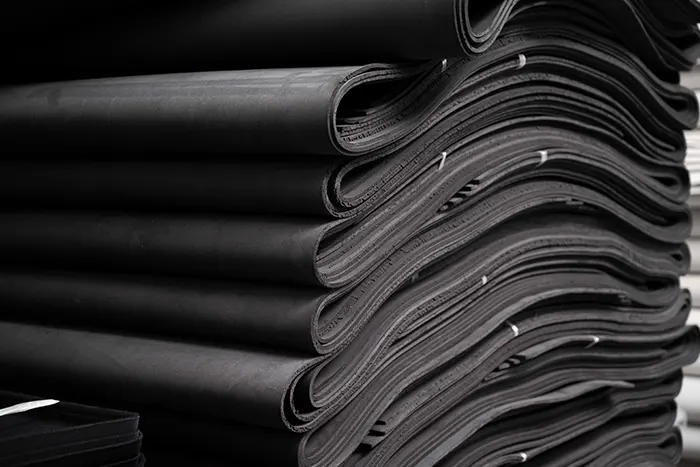
Muchas personas a menudo se preguntan si la espuma EVA se clasifica como goma o plástico.. Mientras que Eva Foam comparte algunas características con el caucho y el plástico, no es ni un caucho ni plástico.
Espuma de eva vs goma
- Composición: Mientras que tanto la espuma y el caucho EVA son materiales flexibles, Tienen diferentes composiciones químicas. La espuma EVA está hecha de copolímero de acetato de etileno-vinilo, un material sintético derivado del petróleo. Por otro lado, El caucho es un material elástico natural obtenido de la savia de árboles de caucho o producido sintéticamente.
- Densidad: La espuma EVA es generalmente menos densa que el caucho. Tiene una estructura celular con bolsillos de aire, haciéndolo ligero y amortiguador. Goma, por otro lado, es más denso y ofrece un mayor nivel de durabilidad y resistencia al impacto.
- Dureza: EVA Foam viene en una variedad de opciones de dureza dependiendo de la aplicación deseada. Puede ser suave y flexible o más firme con mayor resistencia a la compresión, dependiendo de la cantidad de acetato de vinilo utilizado en la formulación de copolímeros. Goma, sin embargo, Típicamente tiene un nivel de dureza más alto en todos los ámbitos.
Espuma de eva vs plástico
- Flexibilidad: Eva Foam es más flexible que la mayoría de los plásticos. Se puede doblar fácilmente, retorcido, o comprimido sin perder su forma o integridad estructural. Plástica, Dependiendo de su composición, puede tener niveles variados de flexibilidad, pero a menudo son más rígidos que la espuma EVA.
- Absorción de impacto: Eva Foam es conocida por sus excelentes propiedades de absorción de choque. Puede absorber y dispersar efectivamente las fuerzas de impacto, haciéndolo ideal para aplicaciones que requieren amortiguación o protección. La mayoría de los plásticos, por otro lado, tener menos capacidad de absorción de impacto.
- Resistencia al calor: La espuma EVA tiene una resistencia al calor relativamente baja en comparación con muchos plásticos. A temperaturas más altas, La espuma EVA puede deformarse o derretirse. Materiales plásticos, Dependiendo de su tipo, puede exhibir una gama más amplia de resistencia al calor.
Diferencias entre la espuma EVA y otros materiales de espuma

Espuma de eva vs polietileno
La espuma de polietileno es un material de espuma comúnmente utilizado que comparte algunas similitudes con la espuma EVA. Ambos materiales son conocidos por sus propiedades livianas y de absorción de choques..
En primer lugar, EVA Foam ofrece una mayor durabilidad en comparación con la espuma de polietileno. La espuma de Eva es más resistente a la desgarro y puede resistir un uso pesado sin perder su forma. Por otro lado, Mientras que la espuma de polietileno sigue siendo duradera, Puede que no sea tan adecuado para aplicaciones que requieren robustez a largo plazo.
En segundo lugar, Eva Foam posee una versatilidad superior Cuando se trata de personalización. Está disponible en varias densidades, espesores, y colores que permiten una gama más amplia de aplicaciones. Espuma de polietileno, por otro lado, generalmente tiene opciones limitadas en términos de personalización.
Espuma de eva vs neopreno de espuma
La espuma de neopreno es un tipo de material de espuma conocido por sus notables propiedades de aislamiento. A diferencia de la espuma EVA, La espuma de neopreno consiste en construcción de células cerradas, haciéndolo una excelente opción para aplicaciones que requieren aislamiento contra la temperatura o el agua.
Cuando se trata de flexibilidad, La espuma de neopreno ofrece más elasticidad en comparación con la espuma EVA. Esto lo hace ideal para aplicaciones donde la espuma necesita estirar o doblarse sin perder su forma o integridad. En contraste, Mientras que la espuma EVA sigue siendo razonablemente flexible, no es tan elásico como la espuma de neopreno.
Espuma de espuma de eva vs memoria de memoria
Espuma de memoria, también conocido como espuma viscoelástica, es un tipo único de espuma que responde al calor y la presión, moldeo a la forma del cuerpo. A diferencia de la espuma EVA, La espuma de memoria se usa principalmente para fines de comodidad y amortiguación, Especialmente en las industrias de ropa de cama y muebles.
En comparación con la espuma de memoria, Eva Foam tiene una estructura más firme y rígida. Proporciona un excelente soporte, haciéndolo adecuado para aplicaciones que requieren estabilidad y resistencia al impacto. Espuma de memoria, por otro lado, es conocido por su suavidad y capacidad para ajustarse a los contornos corporales.
Tipos de espuma EVA
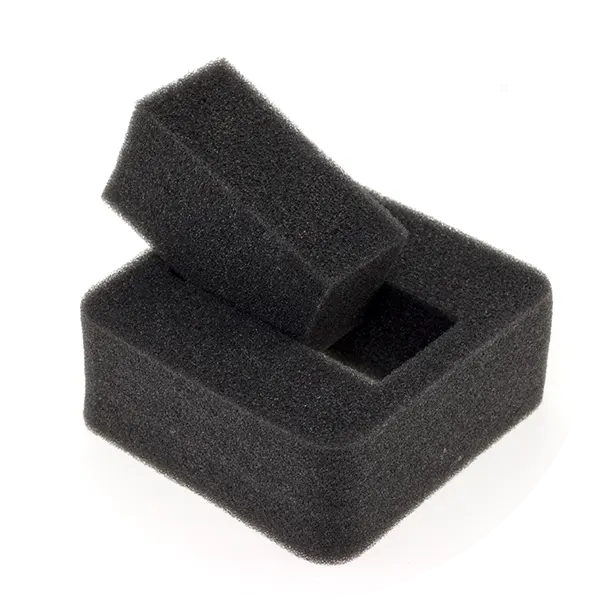
Espuma EVA estándar
La espuma EVA estándar es el tipo más utilizado y es conocido por su versatilidad. Se usa ampliamente en industrias como calzado, equipo deportivo, embalaje, e incluso automotriz. Este tipo de espuma ofrece una excelente absorción de choque., durabilidad, y propiedades de amortiguación. Es perfecto para aplicaciones donde la resistencia al impacto y la comodidad son esenciales. La espuma EVA estándar está disponible en varios espesores, densidades, y colores, convirtiéndolo en una opción popular para proyectos industriales y artesanales.
Espuma de Eva reticulada
La espuma EVA reticulada es una versión más avanzada de la espuma EVA estándar. Se fabrica utilizando un agente de reticulación durante el proceso de producción, que mejora el rendimiento general del material. Este tipo de espuma se usa a menudo en aplicaciones que requieren una fuerza excepcional, resistencia química, y aislamiento por calor. La espuma EVA reticulada se encuentra comúnmente en áreas como equipos marinos y deportivos acuáticos, equipo de protección, aparatos ortopédicos, e incluso dispositivos médicos. Sus propiedades superiores lo hacen altamente adecuado para entornos exigentes.
Espuma EVA ampliada
Espuma EVA ampliada, también conocido como espuma microcelular, presenta una estructura celular más fina en comparación con la espuma EVA estándar. Este tipo de espuma tiene una apariencia más uniforme con pequeñas células cerradas, haciéndolo más firme y denso. La espuma EVA expandida ofrece una excelente estabilidad dimensional, flotabilidad, y propiedades de aislamiento. Encuentra aplicaciones en áreas como accesorios deportivos acuáticos, dispositivos de flotación, y juntas. Además, Su superficie suave e incluso lo hace una opción preferida para imprimir y laminar.
Propiedades de la espuma EVA
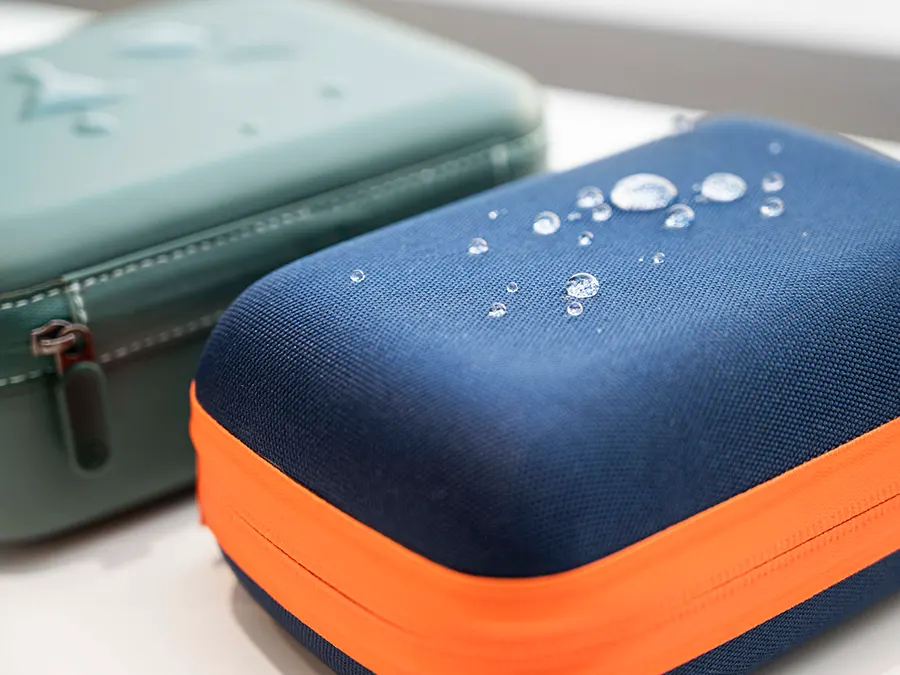
Liviano y duradero
Una de las ventajas clave de Eva Foam es su naturaleza ligera. Esto lo hace beneficioso en las aplicaciones donde el peso es una preocupación, como en la fabricación de calzado y mochilas. A pesar de ser ligero, Eva Foam también exhibe una durabilidad impresionante, Asegurar que pueda resistir el desgaste regular sin perder su integridad estructural.
Suave, Efecto de amortiguación
Eva Foam es reconocida por su efecto suave y amortiguador. Es muy beneficioso en productos diseñados para la comodidad., como plantillas de zapatos y almohadillas de arrodillado. La capacidad de la espuma para absorber adecuadamente el choque y distribuir presión de manera uniforme permite una mayor comodidad y una fatiga reducida., haciéndolo ideal para actividades que implican largos períodos de posición o impacto, Como eventos deportivos.
Resistencia de agua y humedad
Otra propiedad notable de Eva Foam es su resistencia a agua y humedad.. Esta característica lo hace muy adecuado para aplicaciones donde la exposición al agua o la humedad es inevitable, como en carrozas de piscina o ambientes marinos. La resistencia de Eva Foam a la absorción de agua evita la degradación, Asegurar que pueda mantener su calidad y funcionalidad incluso en condiciones de humedad.
Aislamiento térmico
La espuma EVA exhibe excelentes propiedades de aislamiento térmico, haciéndolo una opción atractiva para aplicaciones que requieren regulación de la temperatura. Su naturaleza aislante le permite retener el calor, haciéndolo útil en productos como revestimientos de aislamiento térmico dentro de los componentes de calzado o aislamiento en el embalaje. Esta propiedad es particularmente beneficiosa para mantener temperaturas óptimas y proteger contra condiciones de calor o frío extremos.
Resistencia química y UV
Por último, La espuma EVA posee una resistencia impresionante a los productos químicos y la radiación UV. Esta resistencia lo hace adecuado para aplicaciones que implican exposición a productos químicos o luz solar, tales como rodillas de jardín o alfombras al aire libre. La capacidad de Eva Foam para resistir la corrosión química y la degradación de los rayos UV asegura su longevidad y rendimiento confiable en condiciones ambientales desafiantes.
Aplicaciones de espuma EVA
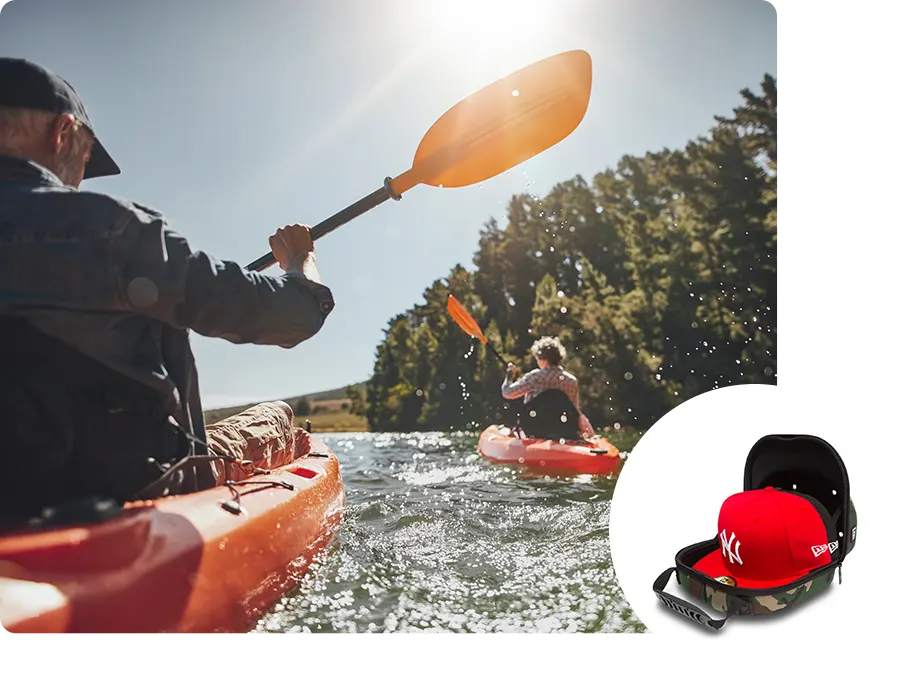
Deportes y recreación
Una aplicación prominente de espuma EVA en este sector está en Midsoles de zapato atlético. La espuma proporciona el apoyo y la comodidad necesarios que los atletas requieren, reduciendo el riesgo de lesiones.
Además, La espuma de EVA se usa a menudo en la fabricación de esteras de yoga y equipo de ejercicio. La naturaleza suave y flexible de la espuma garantiza una experiencia de entrenamiento cómoda mientras proporciona agarre y estabilidad..
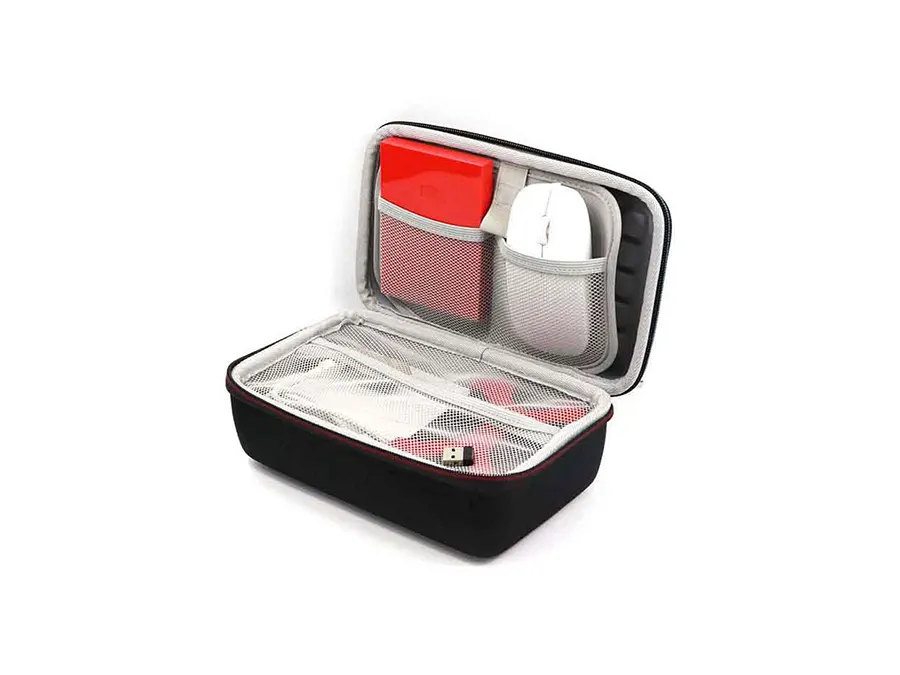
Embalaje y transporte
La capacidad de Eva Foam para proteger los artículos delicados lo convierte en un material ideal para fines de embalaje y transporte. Casos de EVA e insertos de casos de espuma EVA se usan comúnmente para salvaguardar bienes frágiles durante el tránsito. Los insertos de espuma ofrecen propiedades de amortiguación y absorción de choques, prevenir el daño causado por el impacto o la vibración.

Cosplay y accesorios
Eva Foam ha ganado popularidad entre los cosplayers y los fabricantes de apoyo debido a su versatilidad y facilidad de manipulación. La espuma se puede dar fácilmente, moldeado, y pintado para Cree piezas de armadura y disfraces elaboradas para eventos de cosplay. Su naturaleza liviana asegura que el usuario pueda ponerse cómodamente los elaborados atuendos.
Además, Eva Foam se emplea ampliamente en la creación de accesorios de escena y película. Su capacidad para imitar varias texturas y superficies, combinado con su durabilidad, la convierte en una opción preferida para los diseñadores de proporción. Desde armas intrincadas hasta piezas de set realistas, Eva Foam permite la creación de escenas visualmente cautivadoras en la industria del entretenimiento.
Estos son solo algunos ejemplos de las numerosas aplicaciones de EVA Foam en varias industrias. Su versatilidad, durabilidad, y la rentabilidad lo convierte en un material de referencia para los fabricantes, creativos, y atletas por igual.
Pros y contras de Eva Foam
Ventajas de la espuma EVA
Versatilidad y flexibilidad: Está disponible en varias densidades, espesores, y colores, haciéndolo adecuado para una amplia gama de aplicaciones. La espuma EVA se puede moldear fácilmente, conformado, y cortar en diferentes formas. Su flexibilidad lo convierte en un material ideal para crear productos cómodos y amortiguadores..
Facilidad de manejo y personalización: Eva Foam es excepcionalmente fácil de manejar debido a su naturaleza ligera y flexible. Esto hace que sea conveniente manipular y trabajar con, haciéndolo adecuado para proyectos de fabricación a gran escala y bricolaje. Además, La espuma EVA se puede personalizar fácilmente para cumplir con los requisitos de diseño específicos. Se puede pintar, pegado, sellado, o incluso el corte de matriz sin perder sus propiedades originales.
Desventajas de la espuma EVA
Resistencia limitada a temperaturas extremas: Mientras que la espuma EVA exhibe resistencia al calor hasta un cierto rango de temperatura, No es adecuado para su uso en condiciones extremas de calor o frío.. Las altas temperaturas pueden hacer que la espuma se deforma, derretir, o incluso emitir humos tóxicos. Similarmente, La exposición a temperaturas extremadamente frías puede provocar una espuma quebradiza y rígida, reduciendo su efectividad general.
No es adecuado para aplicaciones de carga: EVA Foam no es adecuada para aplicaciones de carga de carga. Carece de la resistencia y la integridad estructural necesarias para el uso de servicio pesado. Puede comprimir o deformarse bajo una presión significativa, haciéndolo inadecuado para aplicaciones que requieren capacidades de carga de carga, como la construcción o uso industrial.
Consideraciones de seguridad con EVA Foam
Peligros y precauciones para la salud
- Riesgos de inhalación: Al cortar o dar forma a la espuma de Eva, Las partículas y el polvo se pueden liberar al aire. Es importante trabajar en un área bien ventilada o usar una máscara para evitar la inhalación de estas partículas..
- Sensibilidad de la piel: Algunas personas pueden experimentar irritación de la piel o reacciones alérgicas cuando están en contacto con la espuma EVA. Se recomienda usar guantes y ropa protectora., especialmente para aquellos que tienen piel sensible o un historial de reacciones alérgicas.
Seguridad y inflamabilidad contra incendios
- Inflamabilidad: Eva Foam es un material combustible y puede encender fácilmente. Es importante mantenerlo alejado de las llamas abiertas, moscas, o fuentes de calor altas para evitar los riesgos de incendio. Siempre trabaje en un área bien ventilada para minimizar el riesgo de incendio.
- Retardantes de fuego: Algunos fabricantes ofrecen espuma EVA-retardante de fuego, que ha sido tratado con productos químicos retardantes de llama para disminuir su inflamabilidad. Si la seguridad contra incendios es una preocupación, Es aconsejable elegir productos de espuma EVA-Retardant-Retardant..
Eliminación e impacto ambiental

- Reciclaje: Eva Foam no es ampliamente aceptada por programas de reciclaje regular. Sin embargo, Algunos centros u organizaciones de reciclaje especializados pueden aceptarlo.
- Impactos ambientales: La espuma EVA no es biodegradable y puede persistir en vertederos durante mucho tiempo, contribuyendo a la contaminación ambiental.
Mantenimiento y cuidado de productos de espuma EVA
Limpieza de espuma EVA
Para mantener sus productos de espuma EVA en las mejores condiciones, La limpieza regular es esencial. Comenzar eliminar cualquier suciedad o polvo suelto con un cepillo o tela suave. Para manchas más obstinadas, Mezcle un detergente suave con agua tibia y frote suavemente el área afectada con una esponja o tela. Evite usar productos químicos agresivos o limpiadores abrasivos, Como pueden causar daños a la espuma. Una vez limpiado, Enjuague cualquier residuo de jabón bien con agua limpia y permita que la espuma al aire seco por completo Antes de usar o almacenar.
Prevenir el daño y la degradación
Evite colocar objetos pesados en la espuma, ya que puede causar hendiduras permanentes. Mantenga la espuma alejada de los objetos afilados o las superficies rugosas que puede causar cortes o lágrimas. También se recomienda Evite exponer la espuma a la luz solar directa prolongada o altas temperaturas, ya que esto puede conducir a la decoloración y al deterioro. Además, evitar Usar la espuma en áreas con humedad excesiva o humedad Para evitar el crecimiento de moho o moho.
Almacenamiento a largo plazo
Comience asegurando que la espuma esté seca y limpia antes de almacenar. Evite plegar o arrugarse la espuma, ya que esto puede causar daños permanentes. En cambio, Guarde la espuma en una fresca, seco, y área bien ventilada donde está protegido de la luz solar directa. Si es posible, Coloque la espuma en una bolsa o recipiente de plástico sellado para evitar el polvo, suciedad, o potencial humedad al alcanzarlo.
Preguntas frecuentes sobre espuma EVA
¿Se puede pintar la espuma de Eva??
Una de las grandes ventajas de Eva Foam es su pintabilidad. Si desea lograr un acabado realista para su armadura de cosplay o agregar colores vibrantes a un proyecto de artesanía, Eva Foam acepta fácilmente diferentes tipos de pinturas, incluyendo acrílico, látex, y pinturas en aerosol. Antes de comenzar a pintar, Se recomienda limpiar la superficie de la espuma con alcohol o un limpiador suave para eliminar cualquier suciedad o aceites.
¿Se puede moldear la espuma de Eva??
Sí, La espuma EVA se puede moldear por calor, que es una técnica ampliamente utilizada para crear formas intrincadas y formas 3D. El moldeo de calor implica el uso del calor para suavizar la espuma, haciéndolo flexible y permitiendo que se reinicie. Este proceso es particularmente útil en la fabricación de accesorios de cosplay o al diseñar productos de espuma ergonómica. Para moldear el calor de espuma EVA, Puede emplear varios métodos, como usar una pistola de calor, agua caliente, o un horno. Una vez calentada, La espuma se puede moldear a mano o usar moldes/herramientas para lograr detalles intrincados. Es importante tener en cuenta que después de la moldea de calor, La espuma puede conservar su nueva forma, o es posible que necesite reforzarlo con capas adicionales o soportes estructurales para la longevidad y la estabilidad.
¿Se puede reciclar la espuma de Eva??
Mientras reciclar la espuma de Eva plantea algunos desafíos, no es del todo imposible. Debido a la presencia de diferentes aditivos y la naturaleza compuesta de la espuma, Las opciones de reciclaje pueden ser limitadas. Sin embargo, Algunas instalaciones se especializan en el reciclaje de espuma EVA y pueden procesarla en nuevos productos o convertirlo en materias primas utilizables. Se recomienda buscar centros de reciclaje locales o instalaciones especializadas que acepten espuma EVA. Además, Considere reutilizar o reutilizar los restos de espuma para proyectos más pequeños para minimizar los desechos. A medida que aumenta la conciencia sobre las prácticas sostenibles, Se están haciendo esfuerzos para explorar formas más eficientes de reciclar la espuma EVA, Mejorando su ecológica en el futuro.
Conclusión
Eva Foam ofrece inmensas posibilidades en varios campos, y comprender sus características, como su pintabilidad, potencial de moldeo por calor, y opciones de reciclaje, es esencial para maximizar su utilidad. Si eres un cosplayer, pañuelo, o creador consciente del medio ambiente, La versatilidad y adaptabilidad de Eva Foam lo convierte en un material notable para trabajar con.


